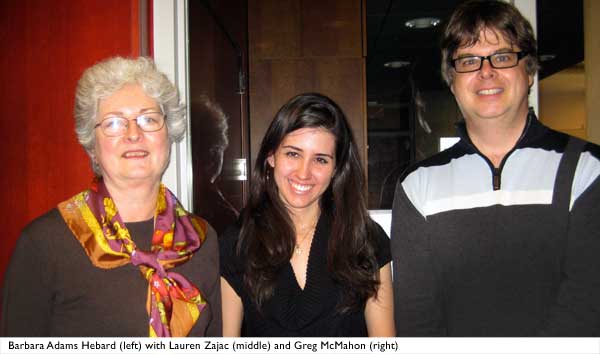Student’s Thesis Investigates Art Mystery at Boston College
A Boston College student’s senior undergraduate honors thesis touched off an across-the-curriculum collaboration between scientists at BC and JEOL, art conservators, museums and collections managers, librarians, and also became the topic of a poster presented at Microscopy & Microanalysis 2011 in Nashville. Additionally, she was the only undergraduate to present a talk before the New England Conservation Association at Harvard University last spring.
The student, Lauren Zajac, chose a university mystery for her thesis, suggested and co-advised by Diana Larsen, Exhibition and Collections Manager at the McMullen Museum of Art at Boston College and supported by her internship supervisor Barbara Adams Hebard, Conservator at the John J. Burns Library: Is the terracotta portrait bust of the Marquis de Lafayette, a Revolutionary War hero in both the U.S. and France, an original work by the famed sculptor Jean-Antoine Houdon (1741-1828)? The artist’s signature ("houdon an. 1790") inscribes the clay, but authenticating the potential treasure housed in the McMullen Museum of Art at Boston College would require further historical and scientific investigation.
Zajac, a chemistry major and studio art minor was in turn introduced by Larsen and Hebard to Dr. Greg McMahon in the Integrated Sciences Clean Room and Nanofabrication Facility at Boston College in Newton, Massachusetts. McMahon became an additional co-advisor for the project, and guided her use of the JEOL JEM-7001F field emission SEM and Oxford Inca EDS to examine several samples taken from pieces that had been broken off when the Marquis was moved.
"She picked up operation of the SEM very quickly," says McMahon. Zajac agrees. "I’d never even seen one before, but I was comfortable using it and interested in how it worked. With EDS you just click a button - there are peak overlaps you have to watch out for, and then you have to interpret all of it."

Through her observation and analysis, Zajac determined that the bust had been cast in a plaster mold, typical of the artist, and she could clearly image gypsum and talc particles. Inside the bust, fingerprints indicated that the clay had been pressed into the mold. From the fragments, Zajac analyzed 10-13mm sized samples of the different layers of the material, but, "The most interesting pieces to analyze needed to be cross sectioned," McMahon explained. To get a more definitive look at the statue’s glaze, McMahon and Zajac consulted JEOL applications scientist Dr. Natasha Erdman, who contributed her cross section polishing expertise to the project. The cross sections were created without any smearing or deformation using the JEOL CP, allowing Zajac to see particles as small as 50 nm in size undisturbed at their location on the surface.
"I was excited to find the really small particles on the surface, like cadmium sulfide (CdS) and cadmium selenium sulfide (CdSeS) particles used in pigments that weren’t manufactured during Houdon’s lifetime," she says. "We then had a conflict between some methods and materials that correlated with Houdon's lifetime and some that did not. We characterized the sculpture in three layers: the thin surface (where wax, gypsum, and pigment particles were found), and pink and grey layers. It was really interesting to connect the elemental data to the artistic process."
Her findings also added an important chapter to the cloudy history of an artwork that made its way to the White House during the Kennedy years, and was eventually given to the college. With the help of Diana Larsen of the McMullen Museum, Zajac was granted access to all the records that had come with the portrait bust when it was bequeathed to the college in the late 60s. Her research led her to the Kennedy Library and the Boston Athenaeum.
The project also helped her determine her career interests more clearly. She is now a research assistant in a biochemistry lab at NYU Skirball Institute while waiting to begin working on her Ph.D. in biochemistry.
Read more here.